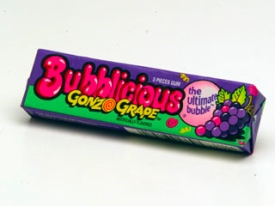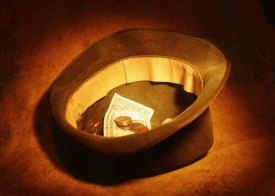Before the turn of the millenium, back when I was first joining an investment bank, I wanted to do some background reading. One of the must-reads was Michael Lewis’s Liar’s Poker. Of course, we were looking at disrupting the business. But in the over-heated world of the Internet IPO, no one wanted to disrupt anything– there was too much money at stake. Like all bubbles, that one eventually popped.
Our firm had a small part in popping that bubble with a piece of research we produced called “burn rate.” The first crop of Internet companies went public very early in their lifecycles. That meant they had to report their financials quarterly. At a certain point it was a simple matter of looking at cash versus run rate to determine how many months these firms had left. In Internet Bubble 2.0, initial public offerings were not possible, but the principle of burn rate remains the same. If a firm is not at, or close to being cash flow positive, they’re burning cash. This time the fires are behind closed doors, but their burning just as brightly.

But the Internet Bubble is nothing compared to the Real Estate / Sub-Prime Bubble. While trying to get my hands around this Bubble and Collapse, I turned to Michael Lewis again. Lewis’s article, “The End,” in the December issue of Portfolio nails it. The Sub-Prime meltdown is difficult to understand. And when people talk about the “bailout,” it’s hard to understand what exactly needs to be bailed out. Treasury Secretary, Hank Paulson, has come under criticism because he’s perceived to be playing whack-a-mole with the crisis.

Lewis takes a simple approach to explain the situation. He looks at the other side of the trade. Every trade requires a buyer and a seller. While the vast majority of the nation and Wall Street were buying in to the idea of ever rising real estate values, Steve Eisman, of FrontPoint Partners, was shorting the bubble. The article exposes the transubstantiation of BBB rated debt into AAA rated debt. As Eisman struggles to understand the trades he’s making, we start to understand the Doomsday Machine that Wall Street was constructing. For the bubble to keep expanding, it was important that the emperor was percieved as being fully clothed and regal. People like Peter Schiff were laughed at for trying to seriously address the problem. Risk is at the heart of investing, but in the real estate bubble, risk was grossly misrepresented. The label on the box said it contained wholesome ingredients, higher return with less risk. It was too good to be true, and it was. Bubblicious.
Lewis closes the loop by having lunch with John Gutfreund. Gutfreund was the CEO of Salomon Brothers while Lewis worked there. Liar’s Poker chronicles that time. They were the first i-Bank to go public, created the mortgage-backed security and their BSD’s from the bond arbitrage group went on to found Long Term Capital Management. Investment Banks follow the Golden Rule, he with the most gold makes the rules. Lewis posits that this is the end of investment banking as we know it.
Comments closed
